Discover how eating like some Scandinavians could be better for the environment and even lead to weight loss.
Plant-based, seasonal foods with a healthy dose of fish and seafood and a limit on processed foods are the key components of a Nordic diet.
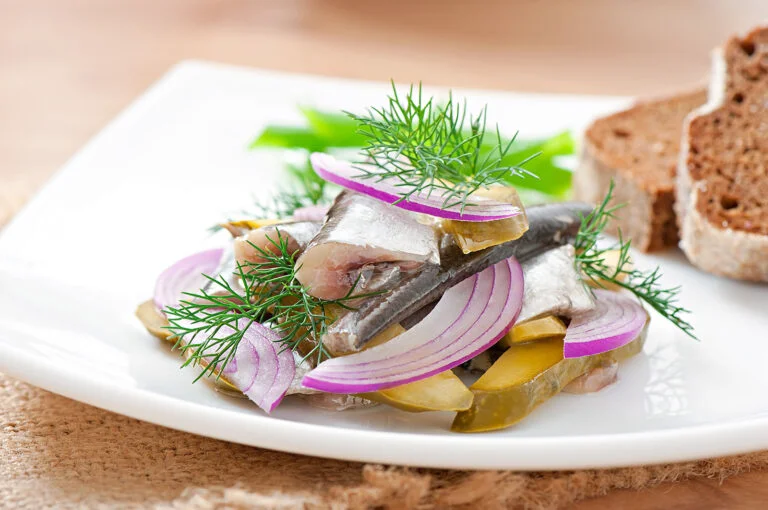
While it’s not a diet universally enjoyed across the Nordic region, the Nordic diet does form the basis of many people’s approach to eating.
It’s similar to the Mediterranean diet in many respects. So, while there’s no single ‘diet plan' to follow, inspiration from the Nordics could be used to help you live a more healthy lifestyle.
What is the Nordic diet?
The Nordic diet is a way of eating that emphasises fresh, whole foods. The main idea is to eat local produce that’s high in nutrients and, as far as possible, unprocessed.
Think lean proteins, low GI complex carbohydrates and healthy fats. It probably goes without saying that the diet is high in both vegetables and fruits, as they’re the backbone of almost all successful healthy eating systems!
As well as leafy greens that are low in calories and high in fibre, you’re also encouraged to eat the beets and root vegetables that are sometimes avoided on diets. While these veggies can be higher in calories, they contain vital nutrients that are often missing from the more processed foods we eat too much of in the West.
Also, there’s an emphasis on eating legumes such as peas and beans as these are, again, an excellent source of good quality nutrients, including complex carbohydrates, proteins and, importantly, fibre.
The main sources of protein in the Nordic diet are oily fish, such as Norwegian salmon, mackerel, and herring. These contain both protein and essential fatty acids that are important for heart health. Lean protein such as chicken can also take its place as long as decent quantities of oily fish are included.
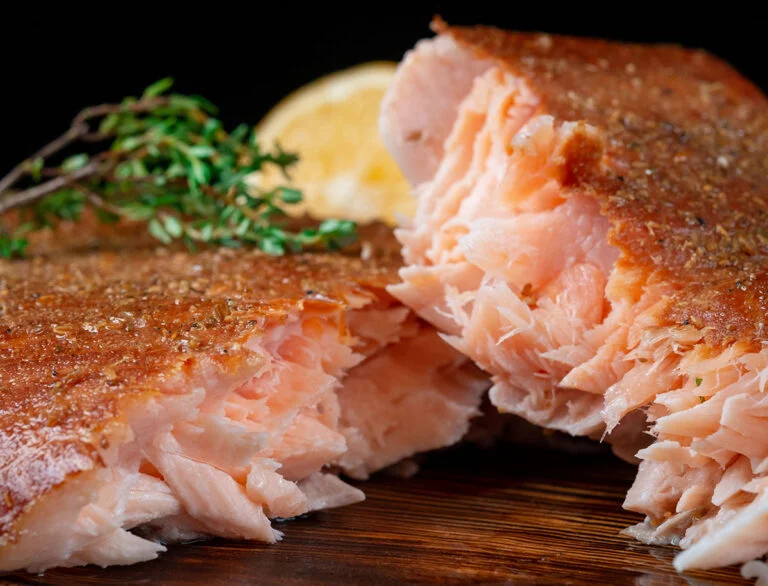
If you want to eat red meat then game is the way to go, with venison and rabbit much preferred to beef and lamb. The leaner meat is a much healthier option while still giving that full meaty flavour.
The origins of the Nordic diet
Researching this article, I found two conflicting origins for the Nordic diet. The first suggests that the diet was developed by a group of nutritionists, scientists, and chefs in response to the fact that levels of obesity were increasing in the Nordic countries. There’s also some suggestion that farming practices were becoming unsustainable.
The second theory is that it was developed by scientists and nutritionists outside Scandinavia after observations that Scandi-folk have lower levels of obesity and related diseases than those in other Western countries.
Looking at figures for these things, it seems possible that this is true. Nordic people are healthier than those in other Western countries. But there’s no way of knowing whether that’s down to diet, increased exercise, or the combination of both.
I can’t say for sure which theory is correct. Perhaps both are. It could be that the Nordic scientists developed an eating scheme to help their own people live healthier lives and then others around the world looked at this and packaged it as the Nordic diet.
Either way, it’s clearly centred around the kinds of foods that are easy to obtain in Scandinavia so it seems most likely that it was originally conceived there!
What is New Nordic cuisine?
There’s also the term “new Nordic” to consider. Many fancy restaurants around the world have adopted “new Nordic” cuisine, which is essentially a premium version of the Nordic diet.
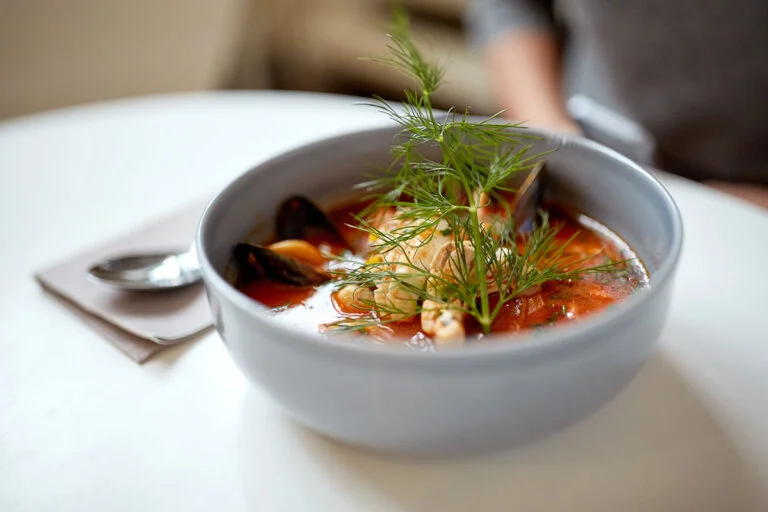
Such restaurants will feature authentic Nordic ingredients, simply cooked but often served with a twist. This was conceived by a group of Scandinavian chefs in the early 2000s.
A diet for the environment
As you might expect from the Scandinavians, the health of the person isn’t the only consideration of the Nordic diet. The region is well known for its focus on environmentalism and ecology, and this extends to the Nordic diet too.
Listen: Sustainable Food in Trøndelag
The emphasis on eating locally sourced produce makes sense in two different ways. Firstly, we know that food starts to lose its nutritional value from the time it is picked. For the most nutritious food, we need to gather the food and eat it in the shortest time possible.
This also works well for the planet. The best food a person can eat is grown in their own garden. Second best is from the nearest farm and finally, food grown within the same country.
Food grown abroad – which accounts for a huge percentage of the regular Western diet – is bad news for the planet and bad news for our health.
Isn’t this just the Mediterranean diet?
If you’re familiar with the various eating schemes that have been promoted for healthy living, you’ll likely be aware of the Mediterranean diet. Said to promote heart health, this is another seafood-rich diet with whole grains and as much local produce as possible.
The main difference between this and the Nordic diet is that the Mediterranean version includes olive oil. Instead of this, the Nordic diet focuses on Canola or rapeseed oil, or rapsolje in Norwegian. It is a much easier source of oil to grow in a northern climate.
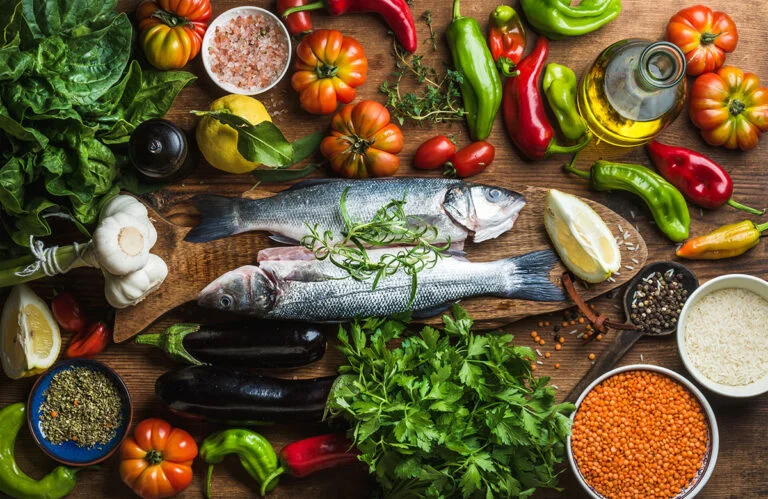
The two oils are fairly similar, being low in saturated fats. Canola oil is actually healthier in this respect, though olive oil contains higher levels of healthy antioxidants.
Canola oil is also a better cooking oil, as it can tolerate higher temperatures before starting to smoke and degrade. Overall, both ways of eating are much healthier than the carb-, sugar- and fat-heavy diets that many of us eat in the West.
Analysis doesn’t show much difference in outcome between the two, but the Nordic diet is newer and so has been studied much less.
Can I lose weight with a Nordic diet?
As with all eating plans, it’s not the system itself that helps you lose weight. Weight loss is all about taking in fewer calories than your body needs, so it has no choice but to burn stores. The main difficulty comes in keeping your metabolism high rather than heading into starvation mode.
The evidence suggests, however, that the Nordic diet is a good eating plan to follow for weight loss. In one study, participants were divided into two groups. One group was told to follow the Nordic diet but with no further restrictions. The other was told to carry on as they were.
The group that switched to the Nordic diet all lost significant amounts of weight. This was in spite of the fact that they weren’t artificially limiting intake or ‘counting calories’. Instead, it’s likely that the types of food they were eating were leaving them feeling fuller for longer so they naturally ate less.
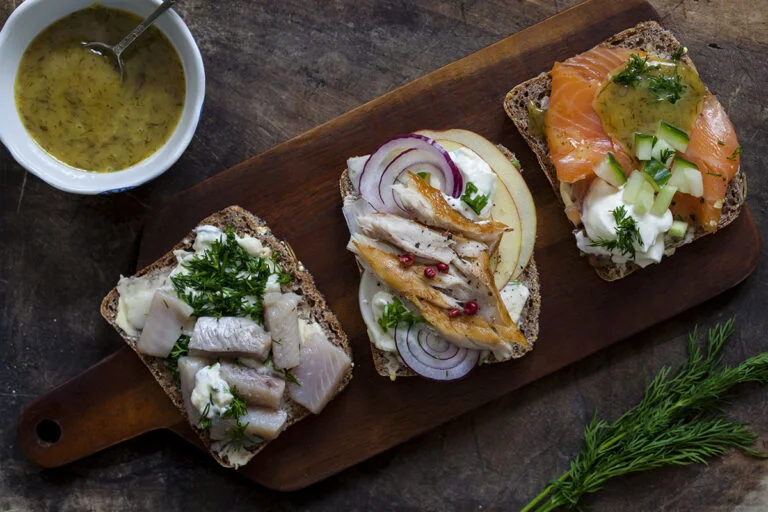
As with all such studies, sustainability is key. A two-year follow up to that study showed almost all participants had regained the weight they originally lost. It’s known that over time, the body adjusts to different food types, so it gets more efficient at processing them. It’s also well known that adherence to eating schemes decreases over time.
The best aspect, however, is that the Nordic diet is the right type of diet if you’re looking for a healthier way of eating. Rather than category-restrictive diets such as Keto or Paleo, or heavy calorie-restrictions such as the infamous cabbage soup diet, the Nordic diet is balanced.
Read more: Must-Try Foods From a Norwegian Supermarket
In other words, the Nordic diet provides everything your body needs, in roughly the correct proportions, so there’s no element of starvation. In combination with a regular exercise regime, and a healthy dose of will power, it’s likely to help people make progress towards their weight loss goals.
Other health benefits of the Nordic diet
Losing weight is far from the only reason to change eating habits. Even if your weight is fine, you still may be eating too much fat or too little fibre. The diet generally includes double the amount of seafood and fibre compared with the Western diet, while including dramatically less processed sugar.
The increase in micronutrients such as vitamins, minerals and essential fatty acids has been linked to a decrease in cholesterol, a decrease in heart disease and circulatory problems, a decrease in inflammation and a decrease in diabetes.
Several studies have been conducted into all of these areas and the results are mixed. There is a pronounced and reproducible lowering of blood pressure in every study done so far so that’s a definite win.
In other studies, sometimes cholesterol is lowered and other times there’s not much noticeable effect. Likewise, one study has noted a lowering in blood sugar while another has shown little result.
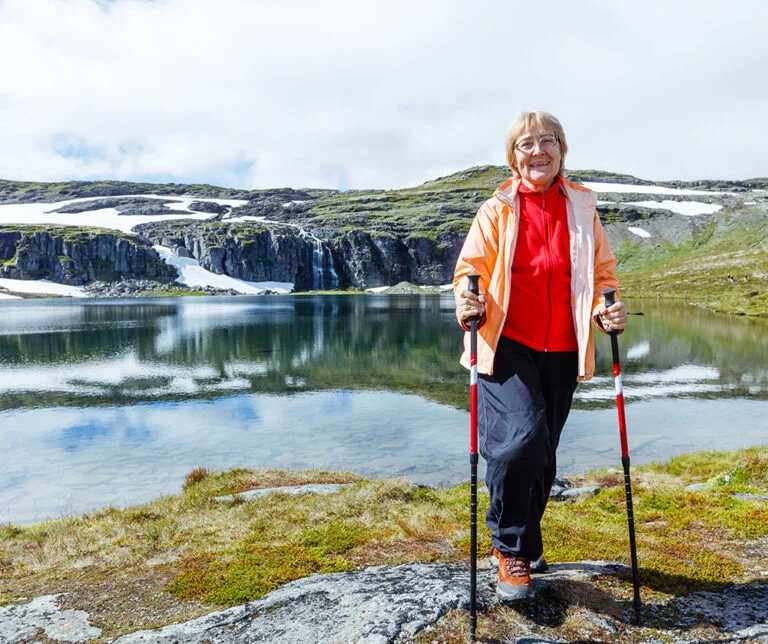
One thing that is clear, however, is that the Nordic diet is much better for you than eating highly processed sugar-laden foods. This is, in fact, true of almost any other diet!
Is the Nordic diet right for you?
The health benefits of the Nordic diet are worth considering, even for people who aren’t looking to lose weight. If you already eat ‘kinda healthily’ then you won’t really notice much difference. But if you’re known by name at your local fast food outlets then the benefits could be huge.
One problem you’ll find outside of the region is the availability of certain foods. We can mostly buy anything we want in most countries, but this totally negates the ecological benefits. Instead of eating ‘what the Nordic people eat’ you’d be better off trying to research what locally grown produce you can find where you live.
So, if you live near a blueberry field, you’ll be much better off eating blueberries than cloudberries that have been imported from Scandinavia. Likewise, if you live on the coast then oily fish will be readily available.
But if not, then it’s better to eat whatever lean protein you can source locally than having someone drive a fish a few hundred miles from the coast!
In other words, the best way of following ‘the Nordic diet’ might be summed up in the principles rather than the exact details.
Lean protein, fruits, veggies, legumes, nuts and seeds – whole foods rather than processed – that are sourced locally will provide a much better diet than you’re probably used to.
Do Scandinavians really eat a Nordic diet?
Some people seem to think that the Nordic diet is some kind of Viking throwback like a Scandinavian equivalent of Paleo. While it’s true the Vikings ate locally sourced produce, including lean meat and vegetables, it’s doubtful it would have resembled the Nordic diet.
The Nordic diet is based on eating modern foods that are readily available in Scandinavia today. Canola oil is a fairly modern invention, as are low fat dairy products. So don’t be fooled into thinking you’re basically a Viking if you grab a handful of berries and eat them with some skyr!
But does the Nordic diet represent how modern Scandinavians eat? Well…yes and no!
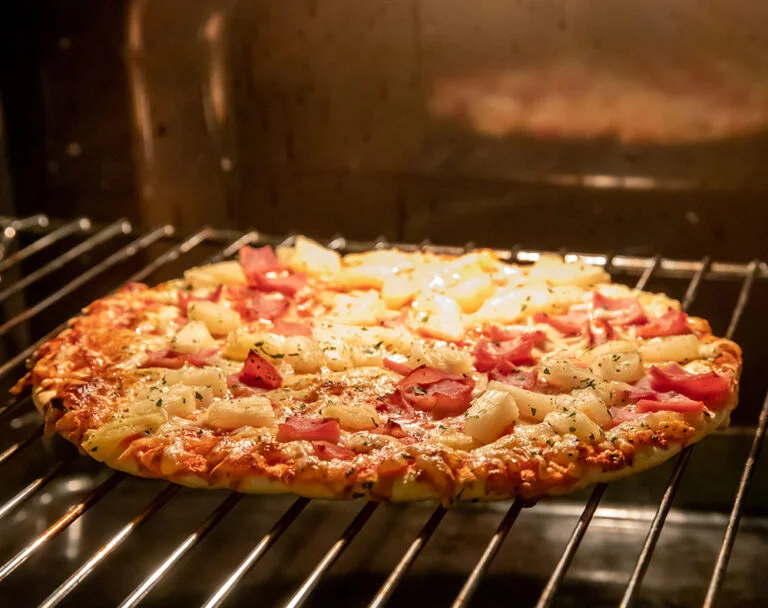
Obviously Nordic folk are known to eat a lot of fish. Norway and Iceland pretty much lead the world in per capita fish consumption and the Swedes and the Danes aren’t far behind.
The other foods on the menu, such as dense whole-grain breads like rye and pumpernickel, similar to the Danish rugbrød and Swedish crispbreads, are also widely eaten. And Scandinavians do also eat a decent amount of plant protein along with their animal protein.
As with all things, however, the real picture is a mixture. Nordic countries have all of the same highly-processed, nutrient-poor foods that contribute to the obesity epidemic in much of the Western world. And don’t forget, the de-facto national dish of Norway is the frozen pizza, Grandiosa!
The Nordic diet may reflect the kinds of foods that are eaten more often in Nordic countries but if you expect to go to Norway and see everyone perfectly eating their three portions of oily fish each week, with boundless plates of locally grown greens, then you’ll definitely be disappointed!
Has this convinced you to give the Nordic diet a try? Let us know in the comments.

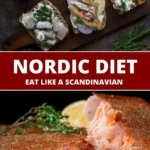

I am going on 84 yrs. old and my grandparents came to the U.S. many yrs. ago and settled in Racine, WI. My grandfather was a bricklayer and the house he built in Racine still looks sturdy!
The Norweigen diet certainly had an effect on my mother because we had our share of fish for dinner.
Norwegians consume far too much convenience food eg Coca Cola ,fizzy drink ,burgers and pizza in my opinion .. my partner , given half the chance ,would be quite happy eating pork rib, sausage and beef steak (without vegetables ) , ever ! He’s a big Viking boy too so can’t see him wanting to adapt his eating habits to this !! However , I think it’s a great idea !! Thanks for your articles ,I really enjoy them ! (we live in Spain by the way and have a great diet here !)
My wife and I will be coming back to Askøy, near Bergen. We have come every year since we now have a house since 2006. The shut down due toC-19 caused us to miss two years. We missed my wife’s family and of course the food. On arrival at our home we always find a tray full of various open-faced sandwiches waiting for us. Our neighbors stock our freezer with left-overs from fishing.
There are two areas with several stores full of the food mentioned in this article within walking distance. Thank you for your reminding us of Norway. We have been blessed by seeing some of the best smorgasbord in western Norway.
My DNA test showed that I have the APOA2 allele inherited from my Norwegian biological father. For the 15% of us with this allele– to avoid fat gain, it is important to restrict saturated fat to <22 grams (approximately) per day, as sat fat above this amount is quickly stored as body fat. The body responds best to high mono and polyunsaturated fats, plenty of nuts and seeds, fairly high lean protein, esp. from fatty fish, and low to moderate complex carbs. There is also a need for higher sal and potassium than normal. I live in the US and just implemented this eating plan to discover how it works for me. I am fascinated to see that the diet described on this page matches it so precisely. Thanks.